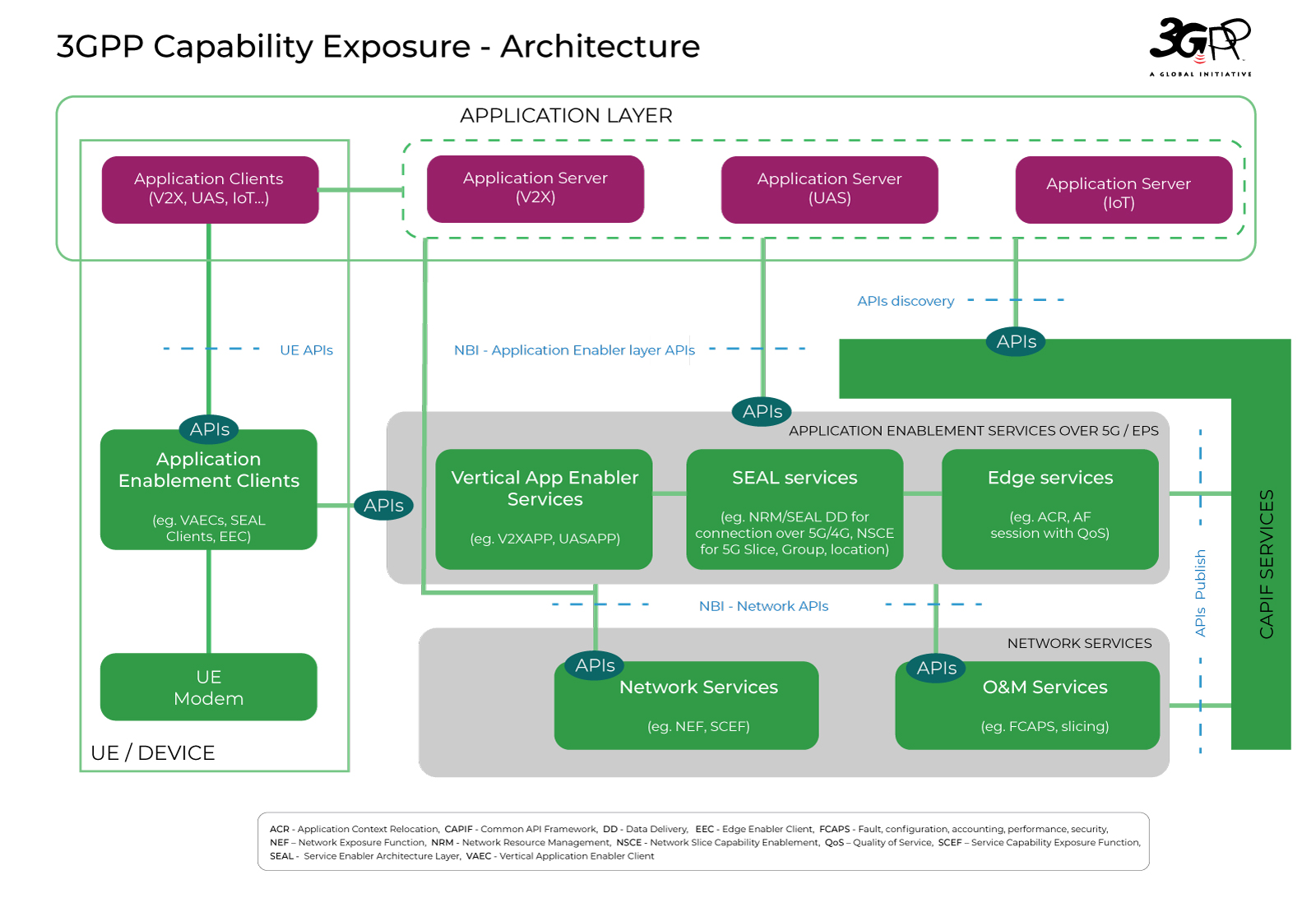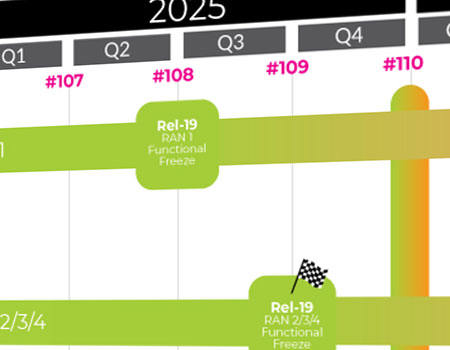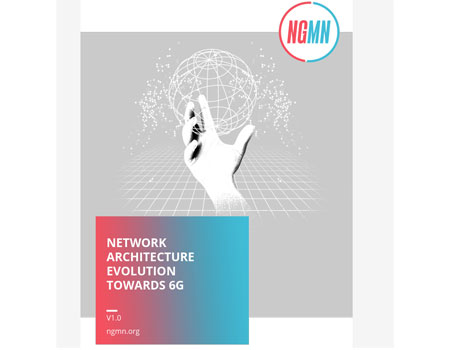By Narendranath Durga Tangudu (CT3 Vice-Chair), Dongwook Kim (CT3 MCC), Yali Yan (CT3 Chair), Susana Fernandez (CT3 Vice-chair), Abdessamad El Moatamid (CT3, Rapporteur)
First published December 2024, in Highlights Issue 09
Mobile communication is at an important juncture - leaping from 5G to 6G. This is a good time to take-a-peek at the 3GPP capabilities enabled for 3rd party entities and for developers to leverage their industry use cases on mobile networks.
From 3GPP Rel-12 (LTE) to Rel-18 and 5G Advanced, 3GPP TSG CT Working Group 3 (CT3) has specified a series of exposure of network capabilities via 3GPP Capability Exposure frameworks.
This article summarizes the work done on protocol and interface aspects for the 3GPP Capability Exposure interfaces, bridging 3rd party entities and mobile networks, enabling collaboration for the benefit of the verticals and the mobile ecosystem.
Unlocking the potential of Capability Exposure APIs
Whereas in the past users had to adapt to the capabilities given by the mobile network, 3GPP Capability Exposure APIs allow users and applications the flexibility to leverage and influence the capabilities of the network and enable the telecom service providers the potential to monetize their network capabilities, by allowing external applications.
The potential revenue enabled by network APIs in the next 5-7 years is forecasted to be up to $300billion [1]. To unlock this potential, harmonized and standardized approaches are required to provide further reach and economies of scale.
A High-level architecture
The 3GPP defined capability exposure frameworks can be categorized as follows:
- Network Northbound APIs, expose in a secure way the 3GPP (i.e., 4G or 5G) core network capabilities (e.g., Network Events exposure, QoS and network traffic influence, etc.) to external applications via either the Service Capability Exposure Function (SCEF) for 4G or the Network Exposure Function (NEF) for 5G.
- Application Enabler Layer APIs (e.g., Service Enabler Architecture Layer for Verticals (SEAL), Enabling Edge Applications (EDGEAPP), Vehicle to Everything Applications (V2XAPP), etc.) are enabler abstraction layers for specific vertical applications or common to various vertical applications. They offer the enablement and common core services catering to various industry vertical applications and provide an abstraction layer in parallel or on top of the abstraction functionalities already provided by the Network Northbound APIs. The network and application enabler layer APIs are discoverable via the Common API Framework (CAPIF).
3GPP Capability Exposure Frameworks and APIs
As of Rel-18, the capability exposure frameworks and APIs can be categorized as Network Northbound APIs and Application Enabler Layer interfaces and APIs (also referred to as NBIs). All the APIs are mainly designed based on REST (Representational State Transfer) design principles.
3GPP Network Northbound APIs
The 3GPP Northbound Network Exposure Framework allows the external applications to leverage or influence the mobile core network via the SCEF/NEF exposed APIs, which acts as a single entry point to the mobile core network.
Fundamentally, these APIs allow several types of applications to make use of the mobile network to carry out specific services such as Network Events (e.g., UE location, UE roaming status) exposure, QoS and application traffic influence within the network, Network Analytics exposure and management, application/service related parameters provisioning, etc.
3GPP Application Enabler Layer APIs
The 3GPP Application Enabler Layer APIs are enabler abstraction layers for specific applications (e.g., Edge, UAS, V2X, etc.) or common for multiple vertical application (e.g., SEAL), which allow the exposure of common core and application enabler services to external applications.
These APIs provide an abstraction layer that can make use of the APIs exposed by the SCEF/NEF and any other network APIs (e.g., network management APIs) to fulfill the received requests from applications. For example, the EDGEAPP APIs support, expose and manage edge computing services (e.g., discovery of application servers deployed on edge, application context relocation, adaptation of application parameters to enable mobility, etc.). With EDGEAPP APIs, in Rel-17, 3GPP has enabled for the first time the exposure of services on the network side, as Open APIs to the entities on UE.
The 3GPP Application Enabler Layer APIs designed to be common for multiple vertical applications also enable its secure and efficient use for vertical applications over 3GPP networks. This is achieved via the Service Enabler Architecture Layer for Verticals (SEAL).
The consumers of these APIs are VAL Servers, on which the vertical applications are deployed and Vertical Application Enabler entities specified by 3GPP for specific verticals (e.g., V2XAPP). The services offered include for example location management, network resources management, data delivery management, etc.
Common API Framework (CAPIF)
CAPIF is defined to establish a single and harmonized platform for exposure of all the 3GPP capability exposure APIs (network northbound APIs and application enabler layer APIs), and also for any non-3GPP defined APIs (i.e., APIs defined by other SDO or consortiums such as ETSI ISG MEC, TM Forum, CAMARA, etc.). CAPIF offers the common functionalities (e.g., API publication, API discovery, API exposing function (e.g., NEF) management, API invoker (e.g., Application Function) onboarding management, Security (e.g., NBI API access control), Routing management, auditing and charging) applicable to any set of network or service APIs. Among its security, authentication and authorization functionalities, CAPIF also enables the collection and management of user consent for applications that require the consent of the end users.
CAPIF avoids duplication, brings in a consistent approach to common supporting capabilities, eases the development and rapid deployment of applications (AFs) invoking APIs (e.g., 3GPP network and service APIs).
Playing with Capability Exposure APIs
The Capability Exposure APIs are defined following the same principles as the 5GC SBI APIs, complying with the OpenAPI specifications. Each API is described in an "OpenAPI description" that is part of the Annex of the 3GPP Technical Specification that defines the corresponding interface. Informative copies of the OpenAPI description files defined in those Annexes are stored in a Git-based repository hosted in the 3GPP Forge.
All the files for both 5GC and Network Capability Exposure APIs corresponding to a common Release and date are stored in the same directory. The 3GPP Forge is the platform that contains the software produced by 3GPP, providing the tools to check the syntax of the OpenAPI "yaml" files separately and allows for the cross-checking of the references for all the data types defined in the different APIs.
Both 5GC APIs and Northbound APIs are commonly tested, using forge provided tools for parsing, linting, data type finder, OpenAPI version identification, ABNF checker for HTTP headers, etc.
Conclusion
In summary, the 3GPP Capability Exposure APIs offer varied and easily extensible and evolutive capabilities for enabling the consumption of 4G/5G operators' networks via 3GPP Network Northbound APIs and/or Application Enabler Layer APIs. These capabilities comprehensively offer services hierarchically, opening the door for enabling various sets of use cases for 3rd party applications enabled on mobile networks.
These APIs have evolved and matured over four 3GPP releases. By adopting the industry popular Open APIs, RESTful-design style principles and 3GPP Forge GitHub repository, the 3GPP TSG CT3-defined Capability Exposure APIs are now closer and more relevant to the developer community. As mobile networks embrace new verticals and network capabilities in future, the 3GPP Capability Exposure APIs are expected to evolve with new features and more robust framework aspects.
For more on WG CT3: www.3gpp.org/3gpp-groups



 Technology
Technology




